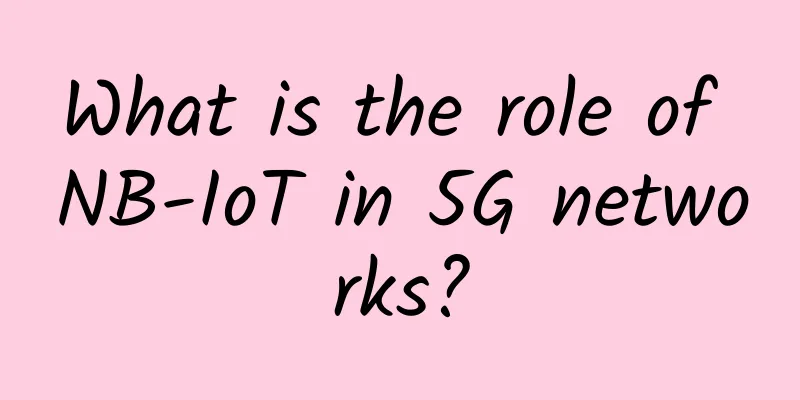In 2016, SDN is accelerating in the enterprise market, while the carrier market is still in the process of warming up.

|
[Original article from 51CTO.com] With the advent of the era of mobile Internet, cloud computing, big data and the Internet of Things, traditional network architecture has begun to fail to keep up with the pace of the times. For this reason, software-defined networking (SDN) has emerged since 2014, and with the advantages of flexibility, scalability, and programmability, it has made the network more efficient, agile, and automated. In 2016, the popularity of SDN remained high, but it became more rational, and the focus of discussion was more on its practical application. Some people regard SDN as the future of the network. Is this view exaggerated or appropriate? The editor has listed the views of several well-known experts in the industry, interpreting SDN from different dimensions of technology, application, and development. Through their attitudes, I believe that everyone will have a more comprehensive understanding of SDN. Wei Leping: SDN must adhere to the dual drive of market and technology to avoid quick success and instant benefits Personal profile: Chairman of the SDN/NFV Industry Alliance, member of the first expert committee in the field of information technology of the National "863" Plan, deputy director of the Communications Technology Committee of the Ministry of Industry and Information Technology, executive director of the China Communications Society and chairman of the Information and Communication Network Committee and vice chairman of the Optical Communications Committee, chief engineer of China Telecom Corporation and president of Beijing Research Institute. SDN/NFV started concept verification in 2014 and entered the field trial/pre-commercial stage in 2015. Some operators have already started large-scale commercial deployment. Overall, except for some areas, SDN/NFV technology is still immature, and standardization and commercialization are progressing slowly. In 2015, the United States began to deploy SDN, mainly to achieve centralized control of the entire network routing through SDN to facilitate innovation. Internet application companies and large cloud service companies have deployed SDN in and between data centers. The main uses of SDN deployment in data centers include network virtualization, cloud services, tenant isolation, ZTP zero configuration deployment, etc., mainly to improve link utilization, ensure QoS, and optimize real-time traffic; in terms of enterprise campus networks and internal data centers, most companies have not yet planned to deploy SDN. The main reason is the lack of urgent needs, including the lack of attractive new services and limited room for cost reduction. They believe that it is too early to deploy SDN. I think that the performance of SDN/NFV technology is not satisfactory yet, the effect of increasing revenue and reducing expenditure is not obvious, and the progress of standards and commercialization is still slow. SDN/NFV is in the stage of field testing, trial commercialization and early commercialization, that is, it has just entered the stage of disillusionment from excessive expectations to maturity. It is estimated that it will enter the development stage in 1-4 years and the stable development stage in 4-8 years. He Baohong: SDN was originally a small boat, but is being dressed up as a cruiser
Personal profile: Chairman of Internet Research Field of Telecommunication Research Institute of the Ministry of Industry and Information Technology, Director of Internet Center of Communication Standards Research Institute, Deputy Director of Communication Standards Institute of China Academy of Information and Communications Technology, Secretary General of Cloud Computing Development and Policy Forum. Vice Chairman of IP and Multimedia Working Committee of China Communications Standards Association, and leader of domestic counterpart groups of ITU-T SG16 (Multimedia), ITU-T IPTV-GSI and IETF. SDN and MPLS have changed IP to the same extent as VLAN has changed Ethernet technology. SDN is a small boat, but it is being dressed up as a cruiser. The key word of SDN's core value is "elasticity", and the most important application scenario is the data center. The closer to cloud computing, the higher the requirements for network elasticity, and the stronger the demand for SDN. Regarding the current SDN "bubble", I have the following views: First of all, SDN is not a major revolution in network technology. Network technology includes three aspects: naming, addressing, and routing. SDN only changes the routing computing mechanism of TCP/IP, from distributed computing to centralized computing. It is a partial revolution in network technology. Distributed or centralized is just a choice, and there is no absolute good or bad. Secondly, I/PaaS needs to better flexibly schedule resources, which should be done with SDN. SDN northbound interfaces for I/PaaS are necessary, but SDN northbound interfaces directly for applications undermine the basic principles of network design and are highly questionable. To add another point, from intelligent networks, NGN, IMS to IPTV, network northbound interfaces have never been truly successful. Will SDN be a special case? Thirdly, SDN and NFV have the same goal. SDN starts from the traditional computer industry and hopes to introduce the traditional practices of the telecommunications industry to IP routing: separation of forwarding and control, and the shift of routing control from distribution to centralization. NFV starts from the traditional telecommunications industry and hopes to introduce the traditional IT practices to IP routing: separation of software and hardware, and a universal hardware platform. Compared with SDN, NFV is more like an implementation technology. The two have different starting points, but the friendship will end up in the same place. Fourth, SDN and CDN are two "networks". The N in SDN stands for connection network, while the N in CDN stands for distribution network. SDN transforms the routing mechanism of IP, while CDN supplements the inherent defects of TCP/IP architecture. SDN is a component of the IP layer, while CDN is superimposed on the IP layer. Finally, the elasticity advantage brought by SDN depends on the cost-effectiveness. Zhao Huiling: Network Reconstruction to Meet the Challenge of SDN
Personal profile: Director of the Cloud Computing Research Center of China Telecom Co., Ltd., Chief Engineer of China Telecom Beijing Research Institute, Director of the Next Generation Internet Technology Joint Laboratory of China Telecom at Tsinghua University, and Professor-level Senior Engineer. He is mainly engaged in technical research on broadband networks and next-generation networks, as well as research on communication network development strategies. SDN will enter a development period from 2016 to 2019, and we hope it will enter a stable development period from 2020 to 2025. I think the main function of SDN is to optimize network traffic to improve network efficiency. From the overall perspective of the industry, SDN is mainly deployed in data centers and across data centers, and also in small-scale commercial applications, but in the wide area network, it is still very rare. The application of WAN SDN is exactly what telecom operators want to see the most. Operators hope to optimize SD-WAN, achieve rapid response, enhance openness, improve service capabilities, improve scheduling capabilities, and enhance automation. At present, there is also great resistance, mainly technical issues, such as compatibility, and the non-openness of north-south interfaces. We are now paying more attention to the northbound interface and hope that the northbound interface will be more clear. At present, the parameters of the northbound interface are also difficult to be consistent. SDN is just a means of technical implementation. In fact, the development of the entire network, including network transformation and network evolution, is a very long process. In the process, users are actually choosing the most suitable technical solution based on business needs. So in a broad sense, SDN represents an idea and method for solving problems, and it will continue to expand and improve in the process of continuous evolution. Finally, I hope that operators can work together with SDN manufacturers to promote the development of the industry chain and make SDN controllers develop in a more standardized direction. Editor's opinion: IDC analysts predict that the SDN market will reach $8.5 billion by 2018 and $11.5 billion by 2020. It is predicted that more pilot programs will be implemented in the enterprise and operator markets this year and next, and SDN will gradually become mainstream by 2019. The reason why SDN has attracted so much attention is that, from a technical perspective, the most important reason is that SDN decouples the control and forwarding layers of the network, achieving centralized control of the network, so that enterprises no longer have to worry about changing the network, and can complete network configuration and adjustment through simple operations or even automation. In addition, the biggest attraction of SDN is that it can save costs, improve network performance, and increase network efficiency. However, integrated features and security are the biggest challenges that SDN has always faced. Regarding the application of SDN, I believe that SDN will be popularized first in cloud data centers, because in the face of different business needs of multiple tenants, SDN's ability to flexibly change network configuration is necessary. Currently, enterprises trust SDN solutions from large network equipment suppliers more, while medium-sized enterprises prefer to choose personalized solution providers. When broken down by industry, the financial industry is the fastest moving, with 20% of companies having deployed (or planning to deploy) SDN, while telecommunications and Internet companies rank second at 12%, followed by the government, medical and energy industries. Finally, it is important to emphasize that although SDN has brought a beautiful vision, enterprises still need to think calmly before deploying SDN. For example, how will SDN help the development of the enterprise's business? Can it solve the problems currently faced by the enterprise? The CXOs of the enterprise need to think clearly about these issues before choosing SDN. [51CTO original article, please indicate the original author and source as 51CTO.com when reprinting on partner sites] |
<<: Intent-driven networking is reshaping network service delivery
>>: How can 5G fixed wireless access replace fiber optic access to the last mile?
Recommend
FONE Consolidation: Reshaping the productivity of consolidated financial statements under the trend of business and financial integration
For large group companies, the preparation of con...
New optical spiral technology can increase information transmission rate tenfold
A new optical-based communications tool can trans...
MWC19 Shanghai | Open decoupling, the next generation evolution of operator networks
[[268794]] With the promotion and application of ...
The fourth largest operator is here and is about to join the battle for 5G users, breaking the three-way competition
As consumers, if we want to receive 5G signals be...
3 Types of Wireless Network Site Surveys and How to Perform Them
Designing and maintaining a network is complex, b...
How to store IP addresses in MySQL efficiently?
A few days ago, a friend of mine went to an inter...
The invisible shift of HCI
Arthur C. Clarke, a famous British science fictio...
HostNOC: $39.99/month-E3-1230v2/16GB/1TB/100TB/Los Angeles data center
HostNOC is a foreign hosting company founded in 2...
Huawei's IP production and broadcasting network solutions continue to innovate, helping television enter the ultra-high-definition era
Today is World Television Day. Do you remember th...
5G latency: Why faster networks matter
When you look at your mobile network or home broa...
Facing these possible accidents, is your operation and maintenance team ready?
With a loud bang, the data center collapsed The d...
CUBECLOUD VPS 12% off, Hong Kong/Los Angeles CN2 GIA monthly payment starts from 60 yuan
CUBECLOUD has released a promotion during the 618...
The three major operators simultaneously announced the new layout of Wi-Fi 6 and entered the "three-gigabit era" in 2020
Recently, the three major operators have made cor...
iONcloud: 15% off cloud hosting in San Jose/Los Angeles, Linux/Windows available
iONcloud is a cloud hosting platform opened by Kr...
ZJI: Hong Kong Huawei Cloud line server monthly reduction of 300 yuan, E3 server monthly payment starts at 450 yuan
ZJI released the promotion information for Septem...









